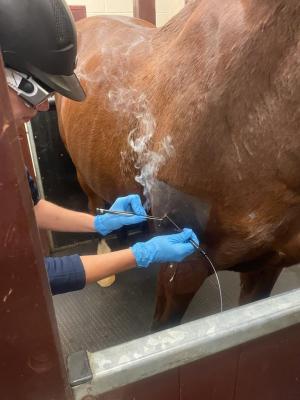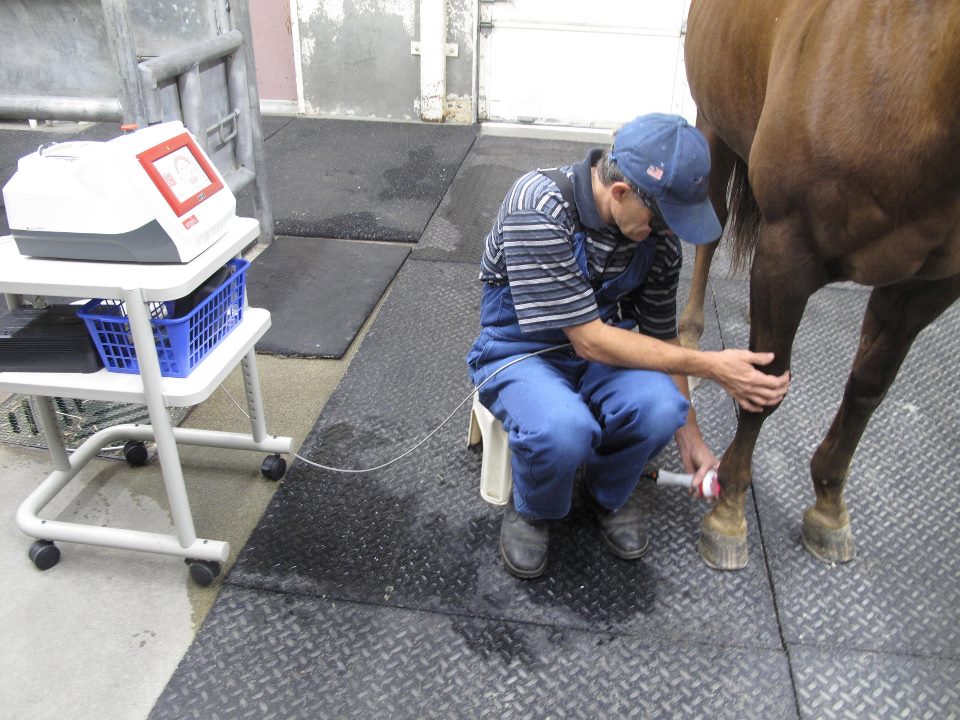Equine Therapy Success Stories: Genuine People, Real Emotional Transformations
Equine Therapy Success Stories: Genuine People, Real Emotional Transformations
Blog Article
Laser Treatment in Equine Therapy: A Modern Approach to Improving Horse Health
Laser therapy has actually emerged as a crucial strategy in equine therapy, making use of focused light energy to foster cellular repair work and accelerate recuperation from a range of disorders. This non-invasive approach is specifically effective in managing musculoskeletal injuries, injuries, and inflammatory conditions, considerably boosting general equine wellness. By boosting mitochondrial activity and improving ATP manufacturing, laser treatment not just boosts blood circulation yet also provides considerable discomfort relief. As this ingenious treatment continues to obtain traction, it opens appealing opportunities for dealing with persistent problems like arthritis and unguis problems, signifying a transformative change in veterinary care. What makes this method particularly engaging?
Recognizing Laser Treatment
Laser treatment, a non-invasive therapy modality, has obtained considerable traction in equine medicine due to its effectiveness in promoting recovery and pain alleviation. Boosted ATP levels quicken cells repair procedures and reduce inflammation, making laser therapy especially reliable for dealing with bone and joint injuries, injuries, and various other inflammatory problems in equines.
There are numerous kinds of lasers made use of in equine treatment, each with certain wavelengths and power outcomes customized to various restorative requirements. Low-level laser therapy (LLLT), likewise referred to as cool laser treatment, uses lower power levels to promote cell function without causing thermal damage. High-intensity laser treatment (HANDLE), in comparison, makes use of greater power levels to attain deeper tissue infiltration and more considerable healing effects.
Veterinarians utilize numerous laser gadgets and methods relying on the condition being dealt with and the desired deepness of tissue penetration. Proper training and knowledge are critical for making certain the secure and reliable application of laser treatment, thereby maximizing its restorative capacity while lessening risks.
Advantages for Equine Health And Wellness
With a strong understanding of just how laser therapy works, it is vital to discover its countless advantages for equine health and wellness. By promoting cellular feature, laser therapy promotes faster wound healing and help in the regrowth of damaged cells.
Moreover, laser therapy has been revealed to improve flow, thereby boosting blood circulation to impacted locations. Enhanced circulation guarantees that important nutrients and oxygen are delivered extra effectively, facilitating the healing procedure. Additionally, laser treatment's anti-inflammatory effects assist in decreasing swelling and discomfort, which is essential for the overall health of the horse.
Pain management is another considerable advantage. By releasing endorphins and obstructing pain signals, laser therapy offers effective, non-invasive relief from both acute and chronic pain. This can add to improved mobility and high quality of life for the animal.
Last but not least, laser therapy is a non-invasive treatment option, lessening the threat of problems related to even more intrusive procedures. Its flexibility and efficacy make it an invaluable device in modern equine vet medicine.
Common Problems Treated

An additional widespread condition treated with laser treatment is arthritis. Furthermore, laser therapy is utilized in the management of wounds.
Horse respiratory problems, such as persistent airway blockage (RAO), also react favorably to laser therapy. Laser treatment is useful in treating unguis problems, consisting of laminitis and abscesses.
Procedure and Security
Implementing laser treatment in equine treatment entails a precise treatment to make sure both efficacy and security. Equine Therapy. The procedure starts with a comprehensive vet assessment to establish the suitability of laser treatment for the steed's particular problem. Once considered ideal, the treatment area is prepared by cleansing and, if required, clipping the hair to boost laser penetration
The professional has to select the right kind of laser, article source usually a low-level laser (LLLT) or a high-power laser (HPL), relying on the problem being treated. The laser tool is after that calibrated to the suitable wavelength, power, and period setups. During the application, the specialist relocates the laser over the targeted location in a systematic way, making sure constant and even direct exposure.
Safety procedures are strictly followed, including using safety eyewear for both the practitioner and the equine. Additionally, it is critical to keep track of the equine for any kind of signs of discomfort or unfavorable responses throughout the treatment. Post-treatment, the horse is typically provided a period of rest to enable the restorative impacts to show up.

Future of Horse Laser Treatment
As advancements in veterinary medicine continue to unravel, the future of equine laser treatment holds significant guarantee. Emerging technologies and deeper scientific insights are set to improve and expand the applications of laser treatment for equines.
Additionally, continuous research study right into the molecular and mobile systems of laser therapy will likely yield maximized methods tailored to certain conditions, boosting efficiency and reducing treatment times. Personalized therapy plans based upon hereditary and biochemical great post to read markers could become a truth, ensuring that each equine obtains one of the most suitable and reliable treatment.
Moreover, regulative advancements and standardization of procedures will improve the credibility and reliability of laser therapy in equine method. Equine Therapy. As these developments continue to emerge, equine laser therapy is positioned to come to be explanation a crucial component of veterinary care, offering improved recovery and boosted top quality of life for horses around the world
Conclusion

Report this page